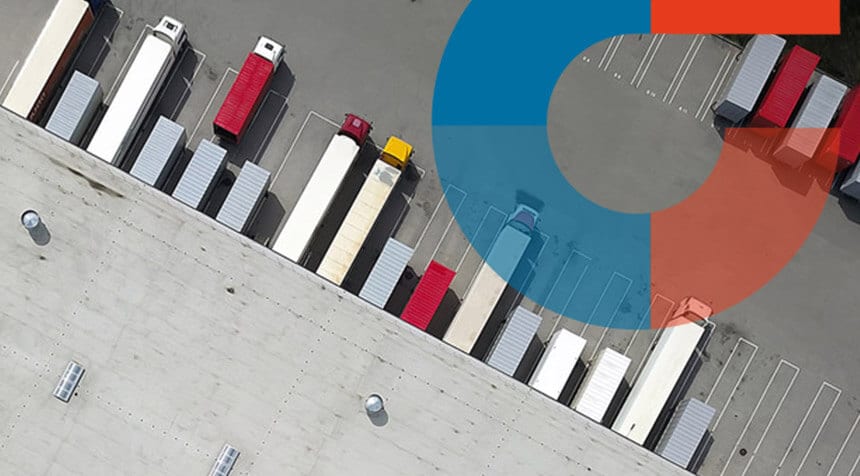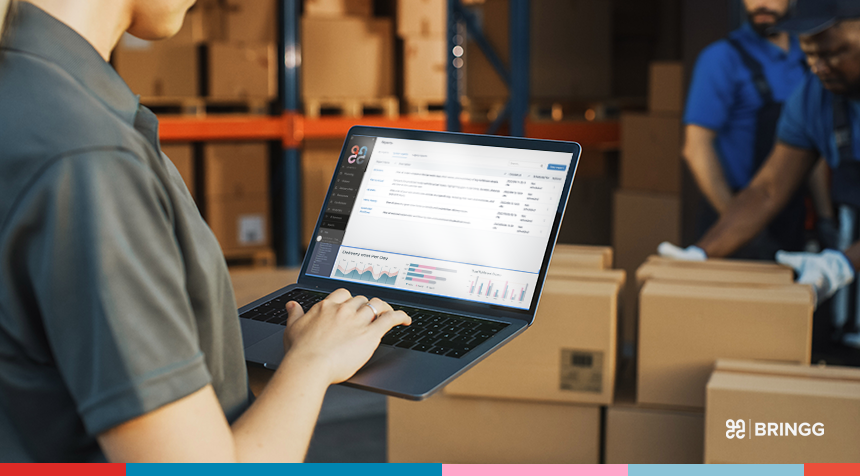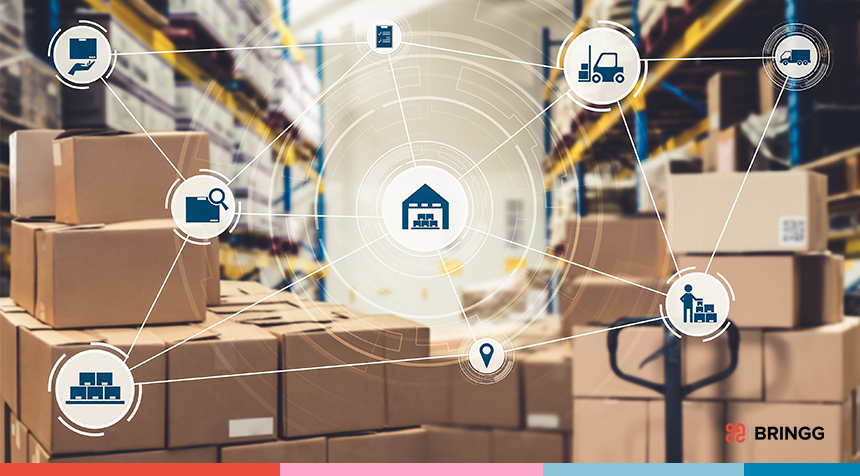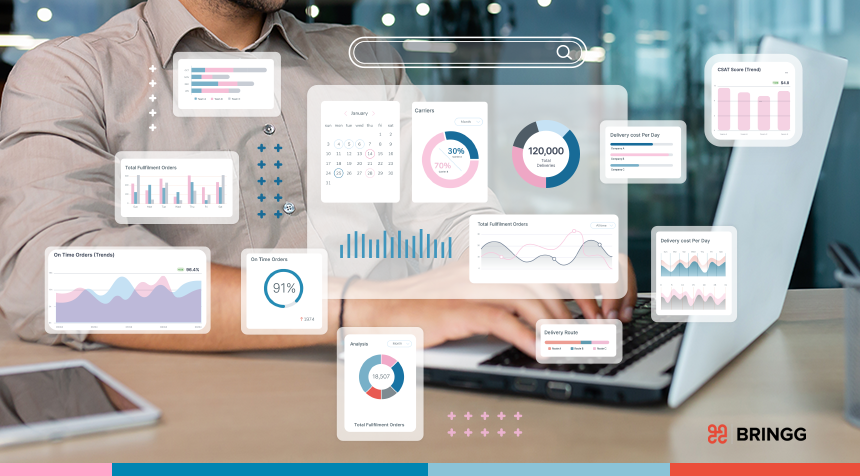With the eCommerce eruption of the last few years, a great deal of focus has been placed on last mile delivery. Shippers and logistics providers are reacting to the changing face of consumer expectations for speed, visibility and convenience in the last mile by investing in real-time tracking and more convenient order fulfillment. Yet despite its similarities with the last mile of delivery, first mile delivery isn’t getting as much attention or resources invested in improving efficiency and visibility. And even less thought has been given to improving the first mile delivery experience and the wider impact that this can have on the overall business.
This article looks at how last mile delivery solutions can be applied to the first mile, in order to improve service to shippers and boost efficiency across the supply chain process.
What is first mile delivery?
First mile delivery refers to the transportation of goods across the first leg of the supply chain. But the first mile could mean different things for different supply chains and industries. For a retailer, this could be delivering items from a regional warehouse to a local distribution center or local stores. For a logistics service provider, this could be a service of picking up goods, and either:
- Bringing them back to their own warehouse or station (i.e. the next day/distribution model) before shipping them to the final destination, or
- A same day or on-demand service where the LSPs pick up the order from the shipper, which then go out for delivery to the consignee
For a moving and storage company, for example, the first mile would involve a pickup from the customer’s home or store, and bringing the inventory back to the warehouse or storage site. The same applies with picking up eCommerce shipments and taking them to a distribution center for the next leg of delivery. In both cases, it involves loading and unloading shipments multiple times. It can involve different drivers managing the same items, items with more than one order ID (which is often resolved manually by many 3pls), and, in the case of LTL freight, shipments from multiple retailers and ecommerce shippers.
Many ecommerce marketplaces and merchants with an online presence, often dealing with parcel shipping, prefer to send their own truck loads to the 3pl’s warehouse, effectively covering the first mile of the delivery process on their own. However, as eCommerce shipments pile up and merchants find themselves rejected by their regular, overwhelmed logistics providers, covering the first mile presents logistics providers with a chance to provide competitive, premium services to more retailers.
First mile delivery challenges
First mile delivery is a complex step in the supply chain process. There are many challenges, but we’ll focus on three primary ones:
- Lack of focus on first mile experience.
Shippers expect a great experience from their personal deliveries – so why not give them the same treatment when their business orders are shipped?
Thanks to the boom in eCommerce and deliveries directly to consumer’s homes, businesses have been paying close attention to the last mile in recent years. Facing fierce competition online, businesses rushed to improve and expand their fulfillment services, overhauling outdated last mile delivery processes.
In parallel, nothing moved in the first mile world. The first mile has been largely ignored from the perspective of the delivery experience – in part because there are fewer businesses involved in the first mile than there are customers in last mile delivery.
However, every aspect of the delivery experience plays a part in creating customer stickiness. B2B shippers are also B2C consumers, who order online and get products shipped to their homes. They receive great delivery experiences with their personal deliveries – so why not give them that same level of service when their business orders are shipped? What’s preventing logistics providers from arranging this?
A great customer experience comes down to two things: visibility, choice, and feedback. These three things help businesses gain a customer’s trust, and make them feel that they are at the heart of the logistics process (which they should be!). The first challenge most businesses face is to convince key stakeholders that the same rules apply as in the last mile: the customer experience must be at the center of operations.
Digitization – For many, first mile delivery is a highly manual process – full of phone calls, pen-and-paper tracking, and two-hour time slots. Shippers don’t have options for different times of day – someone needs to stick around for the provider’s truck to come and haul away goods, without any real-time visibility or any predictability as to when the provider will arrive. These processes can be improved by digitizing the first mile delivery flow.
Large companies have technology for optimizing first mile logistics, but may not have the technology to manage the ‘shipping’ experience. Small companies, on the other hand, may need to do a larger transformational process, taking their entire supply chain from manual to efficient digital operations. This can take a great deal of time and more resources than are available.
Visibility. For most shippers, once a provider takes a truckload from its warehouse, there is zero visibility into where the order is. This is particularly problematic for shippers of big and bulky goods, or fragile or expensive items. When these items get lost or delayed in transit, there’s a lot at stake, not the least of which is a delayed customer and reduced satisfaction with your fulfillment service.
What is first mile tracking?
First mile tracking refers to tracking the status and location of orders from the retailer or manufacturer’s warehouse to a distribution center, or to one of the retailer’s local fulfillment centers. For logistics providers, this can be the transfer of products from a retailer’s distribution center to the provider’s own warehouse, prior to final mile delivery.
Tracking and visibility is one example of how the last mile delivery experience starts with the first mile of delivery. To offer competitive services to shippers, it’s important to look at the delivery experience from the shipper’s perspective as well as the end customer’s, starting with the first mile.
Today, it’s possible to update your first mile shipping and first mile delivery experience using many of the same techniques that are applied to last mile delivery.
Integrated first mile, last mile delivery systems
It is impossible to create flexibility in the first mile in real time, and at scale, without automated systems.
In the first mile flow, everything from route planning to sorting and staging can be managed digitally and automated for better reporting, visibility, and shipper experience. Just as importantly, automation will reduce the time and resources necessary to get goods across the first mile.
So many processes, from tracking, to communications, to notifications and alerts can be automated. Today, you can even speed up transitions by automating the loading and staging processes. That will allow providers to deliver more with the existing resources, or free up capacity to take on more shippers – at a time when delivery capacity is in particularly short supply.
Much of the technology for last mile delivery optimization – such as dispatch and routing software, automated customer notifications and real-time tracking – can be applied to boost efficiency around the first mile and turn it into a key selling point for potential shippers.
Looking for more best practices?
Read our Guide to eCommerce Delivery Logistics
Speed – Shortening the time to warehouse creates efficiencies and price savings for the logistics provider, while ensuring that you can offer premium service plans to shippers and the end user. This can be through
- Intelligent dispatch and routing
- Order batching or automated task consideration
- Enabling simultaneous reverse logistics and regular logistics flow. Being able to manage pickup and dropoff flows along the same route both opens opportunities for services like recycling old products, and managing multiple shipments for moving companies. It also helps optimize for less-than-truckload (LTL) runs.
Enabling Flexibility and convenience
The ability to offer a greater variety of services to shippers – such as both planned and on-demand first mile delivery – can be a gamechanger, just as it is for providers offering it in the last mile. Another way to increase flexibility for retailers and ecommerce companies would be to provide shorter, more flexible pickup windows. For example, instead arriving in the evening at inconvenient hours, providers could offer multiple delivery windows based on real-time availability.
Real-time operational visibility – Visibility across supply chain journey includes:
- Real time tracking – Retailers are the first mile equivalent of the end customer in the last mile: they want to know where their shipments are at all times. For transportation of goods that are expensive or fragile, or white glove deliveries, in particular, retailers are particularly wary about losing track of goods or having them damaged. Yet not many transportation providers provide the customer experience to merchants as they do to consignees. Providing retailers with visibility on first mile tracking will make a big difference in how they view working with that provider.
- Mobile inventory visibility – The sooner you know what’s on a truck, the sooner you can optimize routes and schedule the sequence for the truck’s departure.
- 3D load building: Optimizing how inventory is loaded onto the truck will make unloading at the warehouse or distribution center, and segmenting it there, much faster.
TIP – Tracking is about more than just the shipper experience. Tracking incoming trucks and having ETAs dynamically updated will free up truck terminals, prepare areas for loading on time, and prevent delays in order fulfillment.
Enabling real-time operations takes this a step further and assumes that shipment information and other data can not only be passed in real time, but reacted to. For example, cloud solutions today can enable not only real time tracking, but also live communications between the retailer and driver, and between the transportation team (to manage exceptions quickly).
Real-time visibility is a necessity for enabling on-demand delivery: the ability to offer an accurate quote, make changes to scheduled deliveries in real time, or even dispatch trucks to pick up a shipment for next-day delivery.
Shipments need more flexibility to meet consumer demands. Another way to do this while gaining a competitive edge is by providing shorter delivery windows. This, too, relies on automation. In fact, it is difficult to offer any flexibility at any point in the supply chain in real time, and at scale, without automating the first mile network.
Giving your shippers a voice: A big part of the delivery experience is feeling that your experience matters, to someone. And while the current supply-demand ratio makes shippers compete to be the ‘shipper of choice’, that may change, especially as shippers get used to working with multiple logistics providers for the same regions.
It’s important to show shippers that their experience matters to you. After providing them with a B2B service on the level of a B2C last mile delivery service, the next way of showing this is to give shippers the option of rating their pickup experience. Plus, shippers can offer the same technology and delivery experience to their own customers.
Managing the change to digital across the first mile
For many logistics service providers, much if not all of the first mile shipping process is manual. The first step in reducing costs and increasing efficiency is to move all operations and supply chain data online. Keep in mind that you need applications which provide transparency and control to all stakeholders: From dispatchers, to drivers, to operations managers, and all the way to the shippers.
To learn more about taking your logistics operations digital, or optimizing delivery operations, visit Bringg.com/logistics.
Frequently Asked Questions:
In e-commerce, first mile delivery is described as the processes involved in the movement of an item from the retailer to the courier to the consumer’s home. For instance, when a product is ordered online and is transferred from the retailer’s warehouse to the courier. In this case example, the first mile is the first step in the order fulfillment process.
First mile operations mean different things for different industries. For retailers, it involves delivering products from a warehouse to a local store or distribution center. Companies that provide logistics services, it entails picking up goods and bringing it back to the warehouse prior to shipping to the customer. It may also mean on-demand service where the logistics service providers collect the order from the shipment company and take it for immediate delivery.
This is a process where the products are moved from a manufacturer or retailer’s warehouse to a holding center. From this location, a carrier, shipping company, or logistics partners picks up the products and takes it to the next leg in the destination. In first mile delivery, the order is picked, packed, validated, and transported.
In eCommerce, the first mile refers to the processes involved in taking a product from the e-retailer or warehouse, to a middle mile location. For instance, transferring the product from the retailer’s warehouse to a store or local fulfillment center. It is the first step in order fulfillment.
The last mile is the journey of the product from the shipping or 3pl warehouse or retail store to the recipient’s home. This is the last step in the logistics process.



